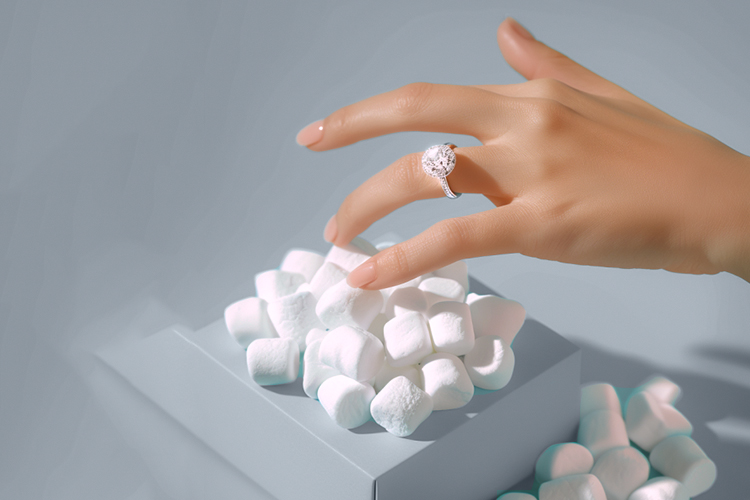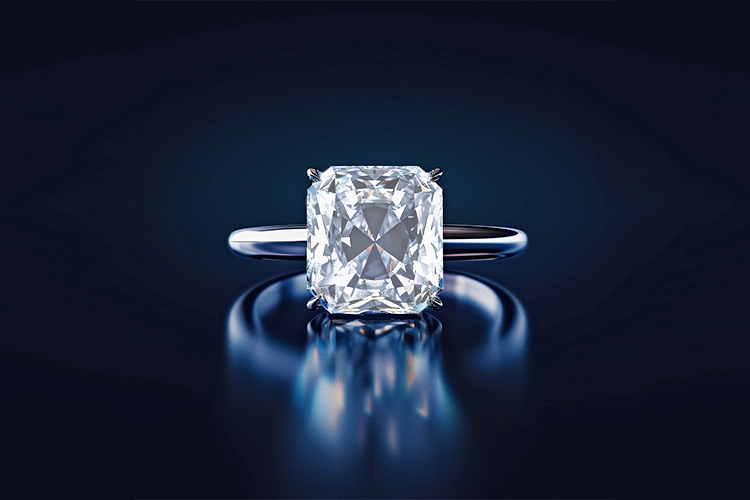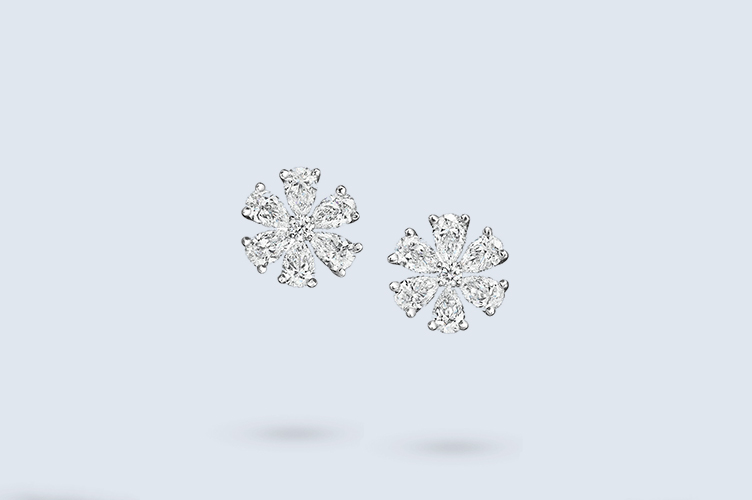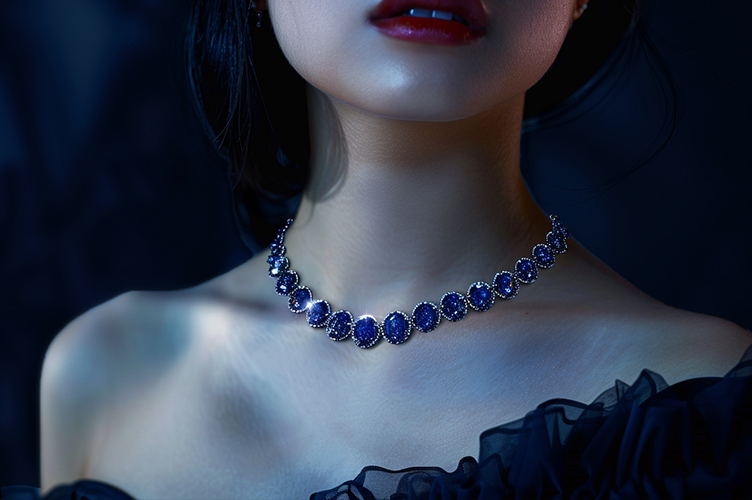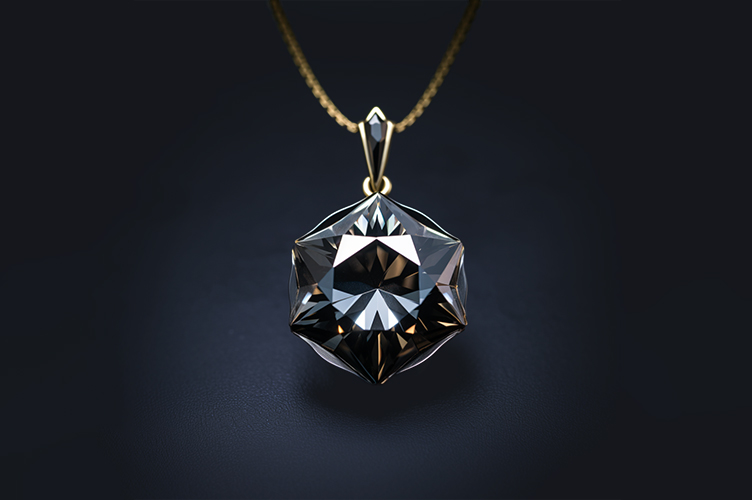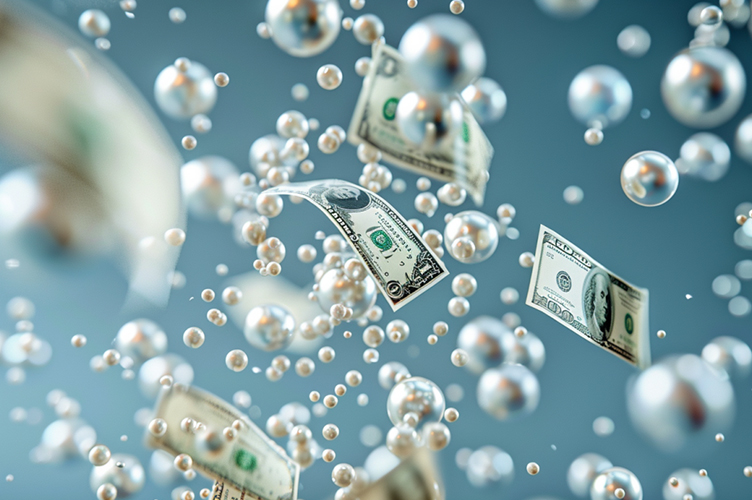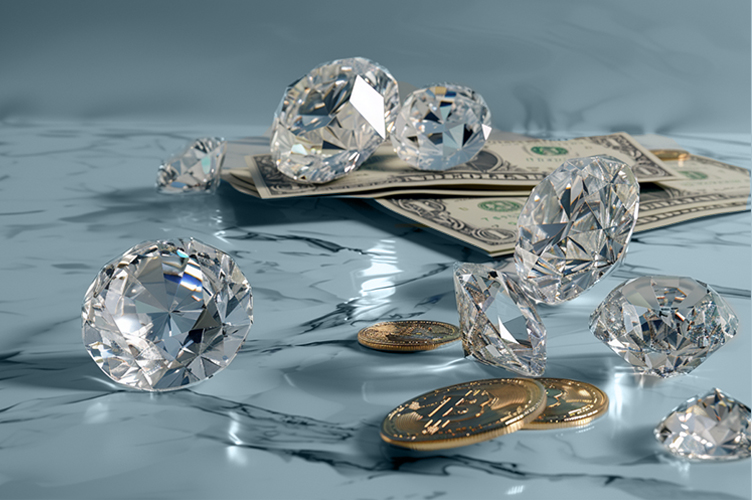White diamonds are some of the most coveted precious gemstones in the world. Let’s take an in-depth look at white diamonds, explore their value and the factors that influence their worth, and uncover what makes these gems so special.
What You Will Learn
- What are White Diamonds and How are They Formed?
- Historical Significance and White Diamond Meaning in Various Cultures
- The 4 Cs of White Diamonds
- How Impurities Create Color Variations
- Popular Cuts for White Color Diamonds
- Natural White Diamonds vs. Lab White Diamonds
- Tips for Cleaning and Caring for a White Diamond
- FAQs
- Protect Your Investment
What are White Diamonds and How are They Formed?
So, what is a genuine white diamond?
A white diamond is not a colorless diamond but is a gemstone prized for its white color. Unlike colored diamonds that exhibit hues ranging from subtle yellows to vibrant pinks and blues, white diamonds are not found on the color spectrum. White is the sum of all colors. White diamonds allow them to reflect light in a way that showcases their brilliance and can have an opalescence appearance.
Diamonds, including white diamonds, are forged deep within the Earth through a remarkable geological journey. The process begins with carbon atoms subjected to intense pressure and extreme temperatures in the Earth’s mantle. Over millions of years, these conditions facilitate crystal formation, giving rise to the precious gem we know as a diamond.
Historical Significance and White Diamond Meaning in Various Cultures
Ancient civilizations associated these pristine gems with purity and divine power. The Greeks, for instance, believed that diamonds were tears of the gods, while, in Hinduism, diamonds were considered protective talismans, symbolizing clarity and enlightenment.
As societies evolved, so did the significance of white diamonds and diamonds in general. During the Renaissance, these gems became a symbol of wealth and opulence among European nobility. The rarity and purity of colorless diamonds (not white diamonds) set them apart, establishing a connection between the stone and social status.
The Cullinan Diamond, is a famous blue-white diamond discovered in South Africa in 1905. The Cullinan Diamond, weighing a staggering 3,106 carats, was eventually cut into several diamonds, with the largest pieces adorning royal regalia.
White diamonds also play a large symbolic role in engagements and celebrations. The tradition of presenting a white diamond engagement ring dates back to the late 19th century, when diamonds became more accessible due to diamond discoveries in South Africa. The idea of a “diamond is forever,” popularized by De Beers in the mid-20th century, cemented the diamond engagement ring as an enduring symbol of eternal love and commitment.
The 4 Cs of White Diamonds

These assessments evaluate diamonds based on the 4 Cs: carat weight, cut, color, and clarity.
- Carat Weight
Carat weight indicates the size of a diamond, with one carat equivalent to 200 milligrams or 0.2 grams. Larger white diamonds are preferable for engagement rings.
- Cut
A well-executed cut maximizes a diamond’s ability to reflect light, enhancing its brilliance. The perfect cut ensures the diamond faces up beautifully, making it a prime choice for those seeking fine jewelry and the ultimate engagement ring.
- Color
The perfect white color diamond features no color at all. People often use the term “colorless white diamond” to refer to diamonds classified within the D to F range on the color spectrum, but this is incorrect. White diamonds are not graded on the GIA’s D to Z color scale. White diamonds can contain hints of other colors, such as gray, yellow, or brown. However, the absence of any brown tint or other colors in a fancy white diamond is a hallmark of elegance and sophistication.
- Clarity
White diamonds, despite their exceptional beauty, are not exempt from imperfections. Clarity measures flaws and inclusions within the diamond and affects its overall appearance. Jewelers and diamond enthusiasts carefully scrutinize a white diamond’s clarity, looking for stones with minimal blemishes.
How Impurities Create Color Variations
The term “fancy white diamonds” is often incorrectly used to describe colorless diamonds that fall within the D to F range of the GIA color grading scale. These diamonds are highly valuable due to their rarity and opalescence brilliance. Their remarkable ability to appear colorless, even when examined closely, contributes to their status as the quintessential choice for engagement rings and fine jewelry.
This fancy white diamond color, often incorrectly called a colorless diamond, owes its opalescent or milky appearance to the presence of certain impurities.
Impurities in colored diamonds introduce a spectrum of hues, ranging from light yellow to vibrant shades, transforming them into what is known as natural fancy color diamonds.
Popular Cuts for White Color Diamonds
As technology advances, precise cutting techniques allow for innovative designs that depart from traditional norms.
One emerging trend is the rise of asymmetrical and geometric cuts, offering a fresh and avant-garde approach to color white diamond design. These unconventional shapes add a distinctive touch to engagement rings, appealing to those seeking a one-of-a-kind piece of fine jewelry.
However, while unique cuts and custom shapes are gaining popularity, it’s important to consider the diamonds face-up.
Diamond face-up size refers to the diamond’s visible area when set in a piece of jewelry. A fancy white diamond needs to display its weight effectively; otherwise, you might be paying for invisible weight. A poor diamond cut can result in a smaller diamond face-up size, correlating with a less vibrant and reflective stone.
Natural White Diamonds vs. Lab White Diamonds
As awareness of ethical and sustainable practices grows, the diamond industry has shifted toward responsibly sourced natural diamonds. Consumers now seek assurance that mined diamonds are conflict-free and mined with environmental and social considerations in mind. The rise of lab-grown diamonds also offers an alternative for those who prioritize sustainability.
Whether you go with a sustainable white natural diamond or a lab-grown white diamond, you have choices for where and how you purchase this gemstone.
Tips for Cleaning and Caring for a White Diamond
Proper care is essential to maintain the brilliance of white diamonds. Regular cleaning with a mild solution and a soft brush helps remove accumulated dirt and oils, allowing the fancy diamond to sparkle at its best. Avoiding harsh chemicals and storing white diamonds separately from other jewelry prevents scratches and damage.
FAQs
What are fancy colored diamonds?
A fancy color diamond is a diamond that exhibits intense and attractive colors beyond the traditional colors of light yellow or brown, including shades like blue, pink, green, and others.
Is a white diamond real?
Yes, white diamonds are real and highly valued for their purity and brilliance.
What are white diamonds?
White diamonds are not your typical colorless gemstones. White diamonds are prized for their unique brilliance and popularity as engagement ring centerpieces.
Protect Your Investment
Whether you’re seeking the perfect engagement ring or preserving a cherished heirloom, BriteCo offers tailored insurance for safeguarding these timeless gems. To learn more, use our convenient online tool to obtain a personalized insurance quote.
Also Check:
How Much Are Diamonds Worth? | BriteCo Jewelry Insurance
2023 Diamond Price Trends | BriteCo Jewelry Insurance

